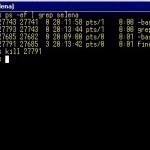Recipient Objects Overview Active Directory objects such as user accounts, contacts and groups become recipient objects when e-mail address information is added to the object. The public folder is another type of recipient object. A public folder does not however usually have its own an email address. Exchange Server 2003 supports the following types of recipient objects: User recipient objects: This recipient object type is created and managed using the Active Directory Users And Computers management console. User recipient objects are associated with the user accounts in the Active Directory Read More
LDAP Security Issues
RFC 2829 – Authentication Methods for LDAP defines the basic threats to an LDAP directory service: Unauthorized access to data via data-fetching operations, Unauthorized access to reusable client authentication information by monitoring others' access, Unauthorized access to data by monitoring others' access, Unauthorized modification of data, Unauthorized modification of configuration, Unauthorized or excessive use of resources (denial of service), and Spoofing of directory: Tricking a client into believing that information came from the directory when in fact it did not, either by modifying data in transit or misdirecting the client's Read More
BOOTMGR is Missing
The BOOTMGR (Windows Boot Manager) is part of Microsoft Windows Vista, Windows Server 2008, and Windows 7. It finalizes the steps in booting the computer and loading the Operating System by looking for the active partition in which Boot Configuration Data is stored. BOOTMGR runs the “winload.exe” process in order to do this. This process is essentially the operating system boot loader that loads the operating system kernel and device drivers that are in the boot-class.Small changes can easily corrupt the BOOTMGR configuration on Vista, Server 2008, and Windows 7. Read More
3DTV
3D TV is, as the name suggests, a television that can play 3D picture. For the most part, 3D TV are TVs that work in sync with LCD shutter glasses that tell the glasses which eye should be exposed to the image on the screen. While 3D TV has been slow to take off, with more movies beginning to go 3D, there has been an increased demand for 3D TVs and therefore, many of the large television companies — Toshiba, Sony, Panasonic, to name a few — have all expressed Read More
Wireless Antennae
Wireless networks are great, when they work. A weak wireless signal can mean real trouble. One of the best ways to improve a wireless signal is to replace the antenna on one or both ends of the connection with a better wireless antenna. Types of Wireless Antennae Wireless antennae fall into five general categories: Omni Parabolic or Dish Yagi Patch Sector Omnidirectional Antenna An omnidirectional antenna works equally well in picking up signals from every direction. Omni's make excellent general purpose and mobile antenna's. The longer an omnidirectional antenna is, Read More
How to Kill a Process in Unix

A computer process is a computer program that is executing and has a unique process identification or PID. On the Unix Operating System (OS), a process may be running in the background, foreground, or be in a suspended state. On Unix, the OS shell will not return the prompt to the end-user until the current process that is executing finishes. As a result, many processes that take a significant amount of time to run and keep you from using the Unix console until it finishes running. A common task that Read More
How Vista File Sharing works
File sharing is a necessity when there is a network. Whether it is the Internet or an intranet, people are sharing files all the time. It helps businesses function at an optimum level as people can share any information they want. File sharing makes files available for others to use. This is accomplished in many ways. In business networks it is done via file servers, on the wider Internet it is done via the peer-to-peer (P2P) model, in which the files are received, stored, and served by the personal computers Read More
WiBro
What is WiBro? WiBro stands for “Wireless Broadband”. It was developed in South Korea, to allow people to access the Internet from anywhere in the country. On top of that, even if you are in a moving vehicle, you can still access the Internet because the WiBro continues to transmit the signal regardless of whether you are moving or sitting still. Currently, WiBro is covering nearly 85 percent of the country. Similar to the WiMax–an American attempt to create wireless broadband in cities–the WiBro uses the IEEE 802.16 standards. The Read More
Data Warehousing
Data warehousing software is quickly on the rise to becoming one of the most needed forms of software on the market today. As more and more companies convert their brick-and-mortar foundations into cyber empires, the majority of information is now digital. Data warehousing software allows for these companies to manage their information by using various business tools to edit data and then store it in one central location that all parts of the company can access. In this article, we will discuss data warehousing and popular data warehousing software. What Read More
What does GIF Stand For?
Graphics Interchange Format (GIF) is a bitmap based image file format. It was developed and introduced by CompuServe in 1987. GIF is one of the most popular image file formats used on the Internet today. The first version of GIF was 87a; CompuServe introduced an advanced version called 89a in 1989. The 89a version enabled the storage of several images in one file, so as to create simple animations. GIF supports up to 8 bits per pixel. This permits a single image to use a palette of an upper limit Read More


Share on: